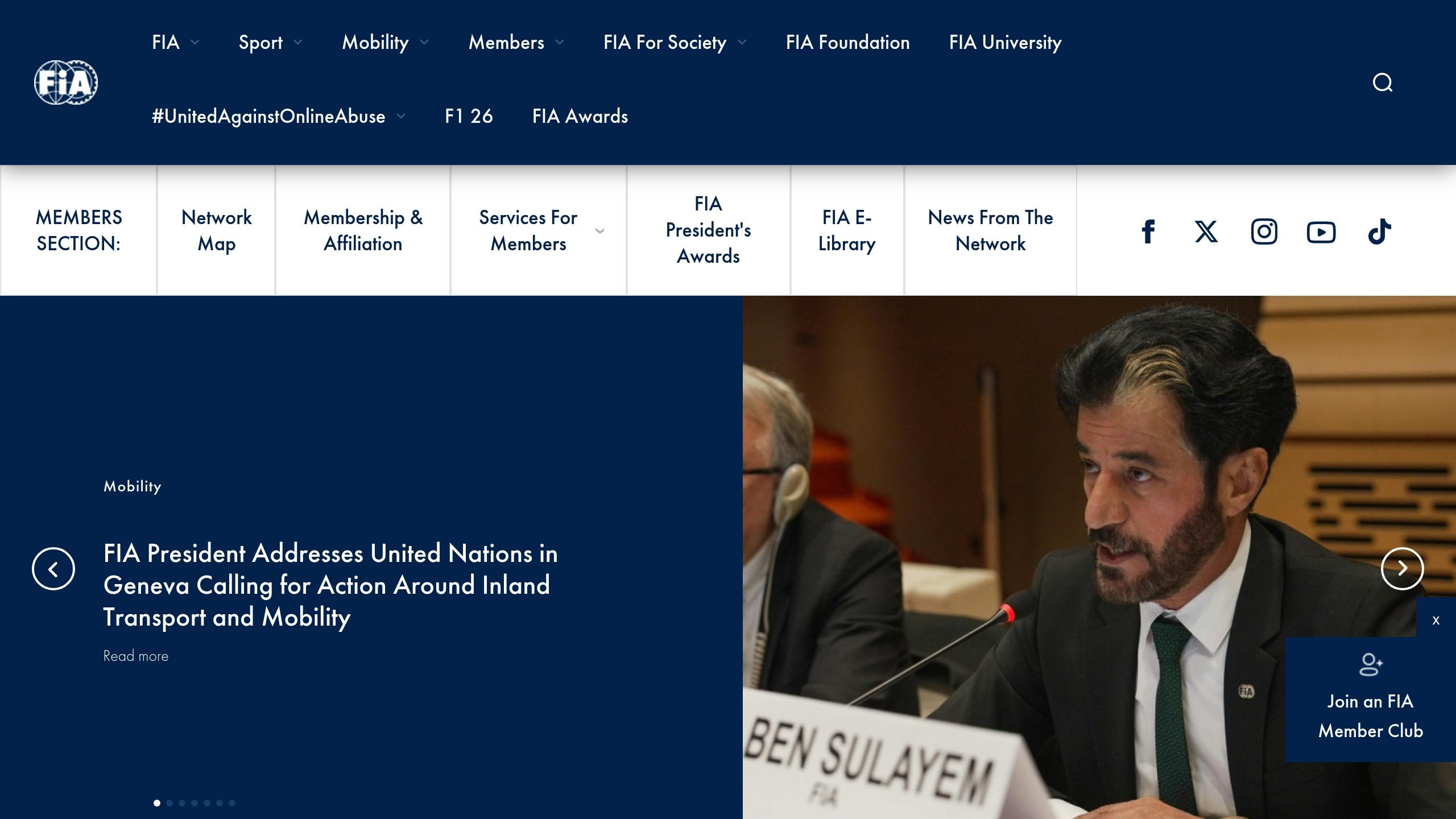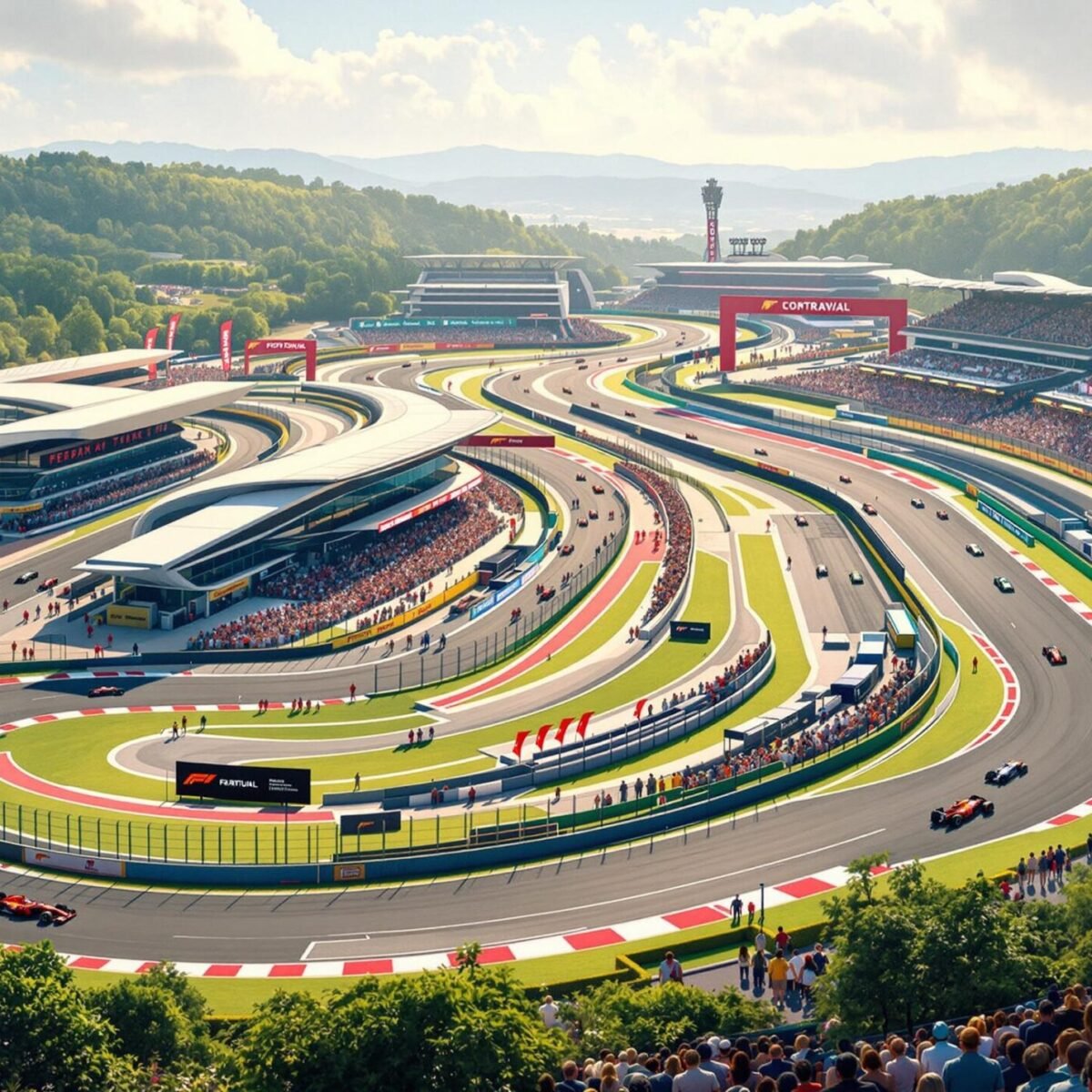F1 circuits represent substantial investments that attract tourism, enhance local economies, and foster year-round revenue opportunities. Constructing a modern F1 circuit costs between $200 million and over $1 billion, with hosting fees ranging from $15 million to $50 million annually. Nevertheless, the returns are impressive: events like the 2023 Las Vegas Grand Prix generated $1.5 billion in economic impact, while the Miami Grand Prix contributed $449 million to the local economy.
Key factors include:
- Construction Costs: Basic tracks cost $200M–$500M; premium facilities exceed $1B.
- Revenue Streams: Ticket sales, sponsorships, corporate events, and year-round facility use.
- Economic Impact: Influx of tourists, job creation, and infrastructure upgrades.
- Safety Standards: FIA Grade 1 compliance with strict track and medical requirements.
- Sustainability: Green energy, waste reduction, and multi-use designs for future-proofing.
Modern circuits, such as Yas Marina and Las Vegas, demonstrate how innovative design, financial planning, and sustainability can create profitable, multi-functional venues.
The HUGE costs of hosting an F1 race
Money and Budget Planning
F1 circuits require massive investments and careful financial management. While costs are high, diverse income streams help balance the books.
F1 Hosting Fees
Circuit operators pay Formula One Management (FOM) annual hosting fees, typically from $15 million to $50 million per race. However, the Las Vegas Grand Prix operates differently. Since Liberty Media Corp (F1’s owner) runs the event directly, it avoids the traditional hosting fee. Instead, organizers poured $435 million in 2023 into safety measures, security, and traffic management.
Circuits face steep construction and ongoing maintenance costs and hosting fees, which complicate financial planning.
Building Costs and Funding
After covering hosting fees, circuits must tackle significant construction and upkeep expenses:
Funding for these costs often comes from a mix of:
- Government support and public investment
- Private sector collaborations
- Corporate sponsorships
- Naming rights deals
Income Sources
F1 circuits rely on multiple revenue streams to stay financially viable. Take the Miami Grand Prix, for example. In 2023, it generated $449 million for the local economy, a 29% increase from its first year. With 270,000 attendees, the event highlighted the economic impact of a well-organized race weekend.
Main revenue sources include:
- Ticket sales for race weekends
- Corporate hospitality packages
- Merchandise and licensing
- A share of broadcast rights
- Renting out facilities year-round
- Hosting non-racing events and experiences
Local Economic Effects
F1 races bring a massive economic boost to host cities. For example, the 2023 Las Vegas Grand Prix had a staggering $1.5 billion impact, according to Applied Analysis. The event attracted over 316,000 fans, including 145,900 unique visitors, each spending an average of $2,800 – well above the usual $800 average. This influx of spending benefits local businesses and strengthens the region’s infrastructure.
Tourism and Business Impact
F1 events drive major spending in local economies. The 2023 Miami Grand Prix added $449 million to the local economy – an impressive 29% jump from its first year. With 270,000 attendees, the event’s success has already led organizers to plan for a larger 300,000-person capacity.
City Improvements
Hosting an F1 race often comes with substantial infrastructure upgrades. In Las Vegas, Liberty Media invested heavily, including:
- $240 million for land acquisition
- Nearly $1 billion in infrastructure projects
- A 300,000-square-foot pit building
- Temporary bridges to ease traffic congestion
These improvements ensure smooth race-day operations and support long-term regional development.
Long-term Benefits
The benefits of hosting an F1 race extend well beyond the event itself. Cities gain from:
- Increased international visibility
- Year-round use of upgraded facilities
- Permanent infrastructure enhancements
- Boosted tourism appeal
- New jobs in hospitality and event management
While upfront costs and annual hosting fees can range from $15 million to $55 million, the long-term value often outweighs these expenses. Many race venues are transformed into multi-use spaces, hosting events like concerts, conferences, and driving experiences, ensuring a steady return on investment.
Track Rules and Safety
Modern F1 circuits are designed to meet FIA Grade 1 safety standards while keeping the racing experience thrilling. These strict requirements significantly influence the design and cost of building a track.
FIA Grade 1 Rules

The FIA’s International Sporting Code outlines specific safety measures for circuits hosting F1 races. For instance, tracks must maintain a minimum width of 12 meters throughout and expand to at least 15 meters at the starting grid. These dimensions can increase land and construction expenses.
Medical facilities are another critical element. Circuits must have fully equipped trauma centers and systems for rapid emergency response, ensuring drivers’ safety in high-risk situations. These features add to the complexity and cost of building a compliant track.
Current Track Design
Modern circuits are built to prioritize safety while encouraging competitive racing. For example, the Yas Marina Circuit in Abu Dhabi, developed with over $1 billion, demonstrates how cutting-edge design can achieve this balance. Key features include:
- High-speed sections paired with large run-off areas
- Technical corners that promote overtaking opportunities
- Advanced materials for track surfaces to improve grip
- Sophisticated drainage systems to handle changing weather
- Strategically placed barriers for enhanced protection
These elements ensure that tracks are secure and engaging for drivers and fans alike.
Green Building Methods
Sustainability is becoming a focus in track construction. The Miami International Autodrome, for example, has incorporated renewable energy sources like solar panels and adopted eco-conscious building practices. While these methods can increase upfront costs, they often lead to long-term savings and reduced environmental impact.
sbb-itb-a66f0a9
Sponsors and Marketing
Sponsorship and marketing deals are key in keeping F1 circuits financially viable. These partnerships help cover the high costs of hosting races and maintaining top-tier facilities. Let’s explain how naming rights, track advertising, and evolving strategies contribute to this success.
Track Naming Rights
Selling naming rights is one of the most profitable ways F1 circuits generate revenue. Sponsors pay large sums to link their brand to prestigious racing events. For example, Louis Vuitton will be immersed in the Australian Grand Prix weekend, including prominent trackside signage—a first for the brand at a sporting event. They will also play a key role in celebratory moments such as the opening ceremony and on the podium, where their famous Louis Vuitton Trophy Trunks will be presented to celebrate the top three drivers’ achievements.
The new Trophy Trunks, covered by the emblematic monogram, will be emblazoned with the iconic “V” in a unique local color scheme against the classic brown background for each race.
Track Advertising
Trackside advertising is another major revenue source. Advertisers pay premium rates for spots in high-visibility areas for live spectators and TV viewers. The Monaco Grand Prix is a prime example, with sought-after locations like the tunnel and harbor chicane commanding top dollar.
New Market Strategy
Modern circuits are finding creative ways to engage local audiences while maintaining global appeal. By blending local culture, digital innovations, and luxury hospitality, these venues attract a wider range of fans and sponsors.
The Yas Marina Circuit in Abu Dhabi is a standout example. With over $1 billion invested in features like a marina and a cutting-edge hotel, it has become a magnet for premium sponsors and expanded marketing opportunities.
Preparing for Future Changes
Modern F1 circuits are evolving to combine cutting-edge technology with eco-friendly practices, aligning with the sport’s goal of achieving net-zero emissions by 2030.
Green Technology Updates
Circuits are stepping up their efforts to adopt greener solutions. For example, Silverstone Circuit has incorporated solar power and advanced waste-reduction systems to minimize its environmental impact. Meanwhile, Yas Marina Circuit has introduced water recycling systems to reduce water usage without compromising its luxurious design and appeal.
Digital Features
F1 venues are also embracing digital advancements to elevate the fan experience. Many circuits now feature augmented reality experiences, real-time data feeds, and smart mobile apps. These tools provide fans with interactive and immersive ways to engage with the event while serving the circuits’ broader goal of staying technologically advanced.
Multi-use Design
Designing circuits for multiple purposes is becoming a priority. Modern layouts allow for quick reconfiguration to host various events, making these venues more versatile. This approach helps reduce operational expenses and attracts a wider audience by catering to different events.
Key Takeaways
Building and maintaining modern F1 circuits requires massive upfront costs and careful planning for long-term profitability. With initial investments often surpassing $200 million, venues must rely on a mix of revenue sources to cover steep hosting fees.
F1 circuits also bring year-round economic boosts, especially through tourism. For instance, the Miami International Autodrome contributed $449 million to the local economy in 2023, and forecasts suggest it could generate $798 million over three years. This highlights the growing importance of F1 circuits in economic and operational terms.
Future Outlook
Circuits must adopt digital technologies to stay relevant while meeting the FIA’s strict Grade 1 standards. Many tracks also align with F1’s goal of achieving net-zero emissions by 2030 by investing in renewable energy and waste management solutions. The Las Vegas Grand Prix circuit is a prime example of a venue that combines cutting-edge design with environmental initiatives.
The future belongs to circuits that can blend technical precision, eco-conscious practices, and diverse revenue strategies to stay ahead in the evolving world of F1.
READ MORE – Charles Leclerc says F1 must be more open-minded about reversing Monaco pit stop mandate
READ MORE – F1 Academy to get the Netflix treatment in 2025





